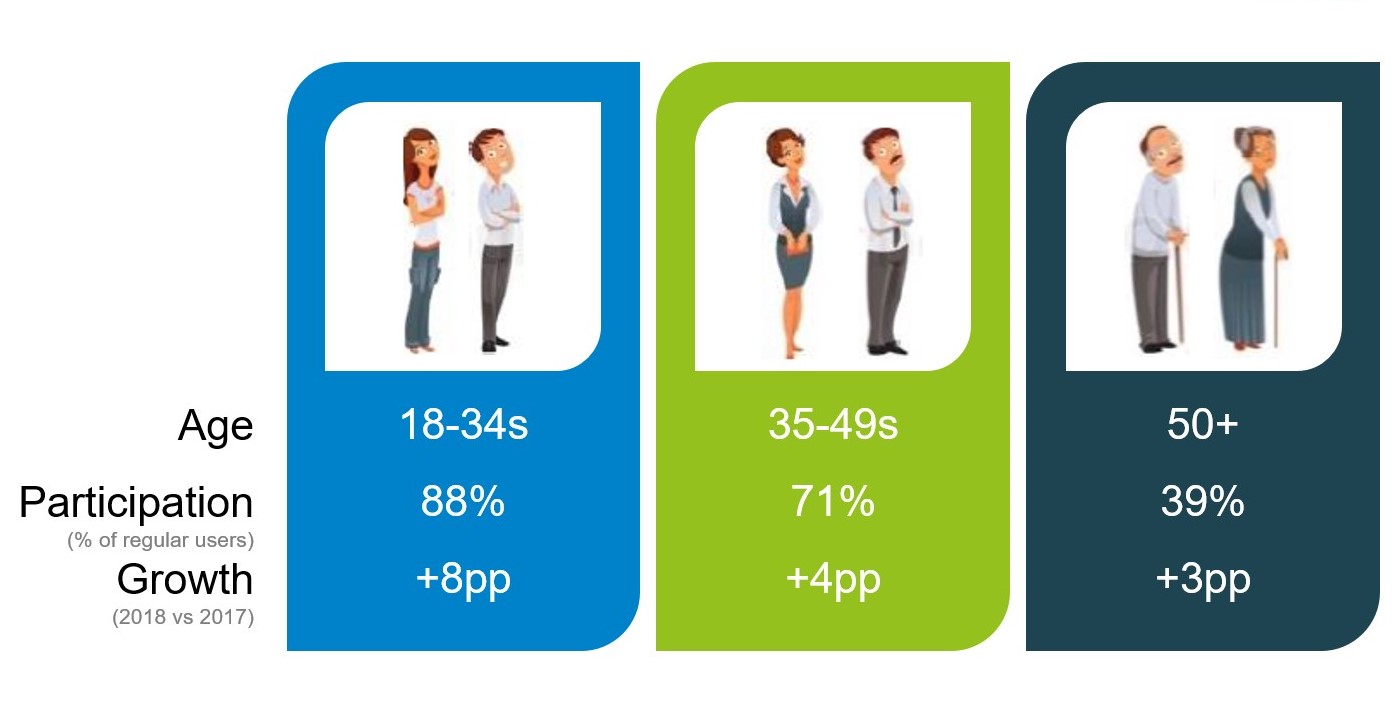Better targeting food home delivery
Tuesday, 21 May 2019
All ages see food delivery as a treat, like going to a restaurant, but it’s also seen as a relaxing and comfortable way to enjoy a night in, rather than the special and social occasions we typically see in dining out.
Due to economic pressures and increasingly busy lifestyles, unlike the eating-out market, the food-delivery market is growing. However, despite consistent growth across all age groups, how these ages approach choosing and ordering a home delivery differs. Therefore, understanding how these groups act, their missions when getting a delivery and which channels they use can help industry to better target consumers.
Delivery market – who and what?

According to MCA, the delivery market is particularly popular with younger groups as 88% of 18–34s regularly get deliveries (at least once every 2–3 months). This group is seeing the fastest growth, as they move with the times, utilising modern apps such as Deliveroo and UberEats. This satisfies their need for food variety, being more likely to order cuisines such as British, but also American and Pan-Asian, which were not widely available in the past. However, it is not just the younger age group who get food delivery, with 39% of the 50+ category also regularly getting food delivered. This group tends to stick to more traditional cuisines of Chinese and Indian as they favour independent restaurants. The 35–49-year-olds also sway more towards tradition but are regulars for pizza-delivery companies.
Delivery market – how?
The digital gap between ages remains, as ordering online is the most common method for younger age groups whereas telephone is used for 63% of deliveries by the over-50s. The 18–34 group are the most likely to use both online and apps, but the 35–49s group are contributing the most growth to the mobile category. Choice of restaurants and speed are most important to 18–34s when ordering a delivery. They are much more functional than older age groups, who value ease of ordering and previous experience when choosing a delivery company. Reassuring this group that they can get their favourite dishes with the same quality is important and the best performance the first time they order is vital for repeat business.
Key takeout – Ease of ordering is key for many but means different things to different age groups. Being able to order deliveries from multiple channels will give you the best appeal to all. Making websites and apps simple to navigate and understand could lead to repeat business.
Delivery market – why?
Treating is the main reason for all groups to order a delivery. For 35–49-year-olds, more than half of these occasions are for one or two people, showing this is often a treat for the adults only. Being too tired to cook and not wanting to cook or go out were the second and third most popular reasons for ordering a delivery, especially as two out of three end up eating their food in front of the TV. For this reason, getting a delivery isn’t typically a celebration event and is more of an ‘everyday treat’.
Key takeout – Often, deliveries are chosen for convenience, as an energy- and time-saving method. Communicating these positives gives consumers ‘permission’ to treat themselves without the need for an occasion.
Delivery market – future?
Of the younger age group, 69% said they are likely to increase the frequency of purchase in the future versus 41% for older people, showing the latter need more encouragement. When asked what could improve their delivery experience, more promotions was top across all age categories – consumers want to feel like they’re getting a deal because food delivery is seen as expensive. The less adventurous over-50s would prefer deals which were specifically for regular users, so loyalty cards or points could appeal to this group. Younger ages claim they would order more often if delivery was quicker, there was a better choice of restaurant and more visual menus, so more focus on food rather than deals.
Key takeout – Menu engineering and deals for multiple missions will encourage people to order more and allow people to think they’re getting the best value for money rather than having everyday low prices.
Related content
Topics:
Sectors:
Tags:


